Cup Testing boutique coffee cup test
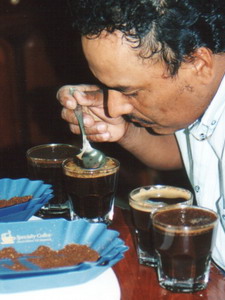
The essence of fine coffee Specialty Coffee is in the cup test (Cup Testing or Cupping), that is, the evaluation of coffee taste, and the cup test (Cupping) is a very important step.
Props for cup testing:

Coffee cup test 10 steps:
1. Prepare a little (about 10 grams) freshly roasted and immediately ground coffee in a small cup.
two。 Smell it and see its dry fragrance.

3. Pour in hot water of about 95 degrees Celsius, do not boil, immediately pour in, leave for about half a minute, wait for the temperature to drop slightly, then pour into the coffee powder.

4. Take a closer look at the aroma coming from the rising steam.
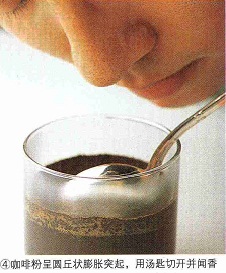
5. Leave the cup sample for three to five minutes and then stir with a long spoon.

6. Stir while smelling and evaluating the aroma and concentration of the steam.

7. Pick up the coffee grounds floating on the surface and throw them away.
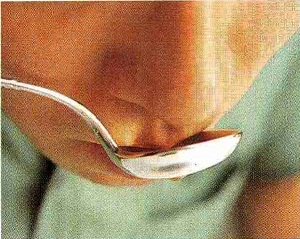
8. Scoop a tablespoon of coffee without residue into the mouth and sip it straight to the root of the tongue ~ feel the smell ~ don't swallow it in a hurry ~ let the coffee flow in the mouth to feel the consistency of the tongue ~ whether the taste is still strong before swallowing into the throat.
9. Slide your tongue onto the upper edge of your mouth to feel its texture and taste.
10. Stay in the mouth for three to five seconds and then spit it out, and whether the aftertaste remains ~ or even turn sweet.
Important Notice :
前街咖啡 FrontStreet Coffee has moved to new addredd:
FrontStreet Coffee Address: 315,Donghua East Road,GuangZhou
Tel:020 38364473
- Prev
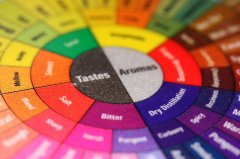
SCAA's coffee flavor wheel
SCAA's Coffee Flavor Wheel (Coffee Tasters Flavor Wheel) (which can be purchased from SCAA) is no stranger to you. You can see it on the walls of some coffee companies, training schools, and related institutions.
- Next
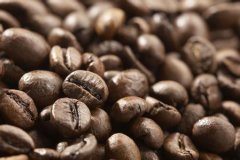
Detailed Analysis of Coffee Bean ingredients basic knowledge of Fine Coffee
Moisture: the water content of coffee beans varies greatly with different processing stages and products. The moisture content of wet coffee beans with film is about 50%, while that of dried raw coffee beans is about 10%-13%. The water content of roasted coffee beans is only less than 5%. The existence of water in coffee beans is the same as other kinds of food and beverages, because it contains a considerable amount of hydration colloid macromolecules.
Related
- Beginners will see the "Coffee pull flower" guide!
- What is the difference between ice blog purified milk and ordinary milk coffee?
- Why is the Philippines the largest producer of crops in Liberia?
- For coffee extraction, should the fine powder be retained?
- How does extracted espresso fill pressed powder? How much strength does it take to press the powder?
- How to make jasmine cold extract coffee? Is the jasmine + latte good?
- Will this little toy really make the coffee taste better? How does Lily Drip affect coffee extraction?
- Will the action of slapping the filter cup also affect coffee extraction?
- What's the difference between powder-to-water ratio and powder-to-liquid ratio?
- What is the Ethiopian local species? What does it have to do with Heirloom native species?

